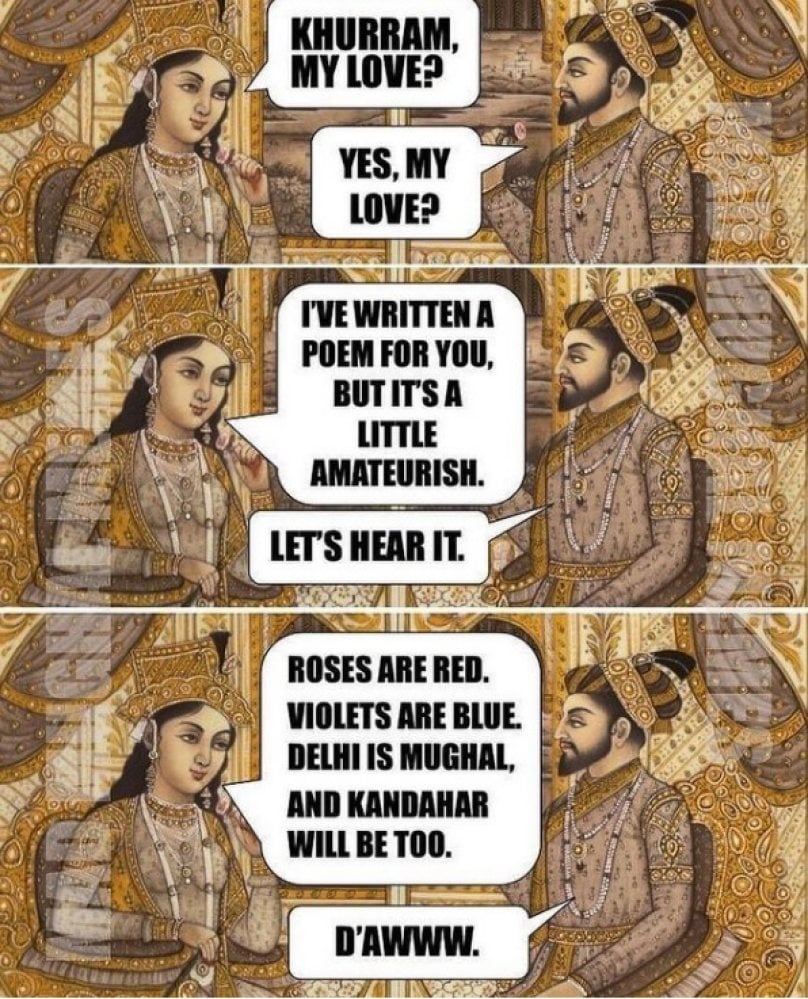
The Facebook and Instagram memes bringing Indian history (and independence struggle) back to life
- Mad Mughal Memes, Heritage Hindustan and Indian History Meme are among a new wave of social media sites using a healthy dose of laughter to deliver lessons from the past
- Among their fans are noted historians and authors, from William Dalrymple and Manu S. Pillai to Rana Safvi, Ursula Weekes and Ira Mukhoty
“So you’re saying that your mom’s a Rajput, but your dad’s a Mughal?”, says the text on a meme featuring Severus Snape from the Harry Potter universe.
“Yes, I’m the Half-Blood Prince,” replies not Snape but Salim, the future Mughal emperor Jahangir – who was born to a Hindu mother and Muslim father, a fact many are unaware of or forget. The meme is contemporary, relatable, and most of all, gets viewers to learn about the past.
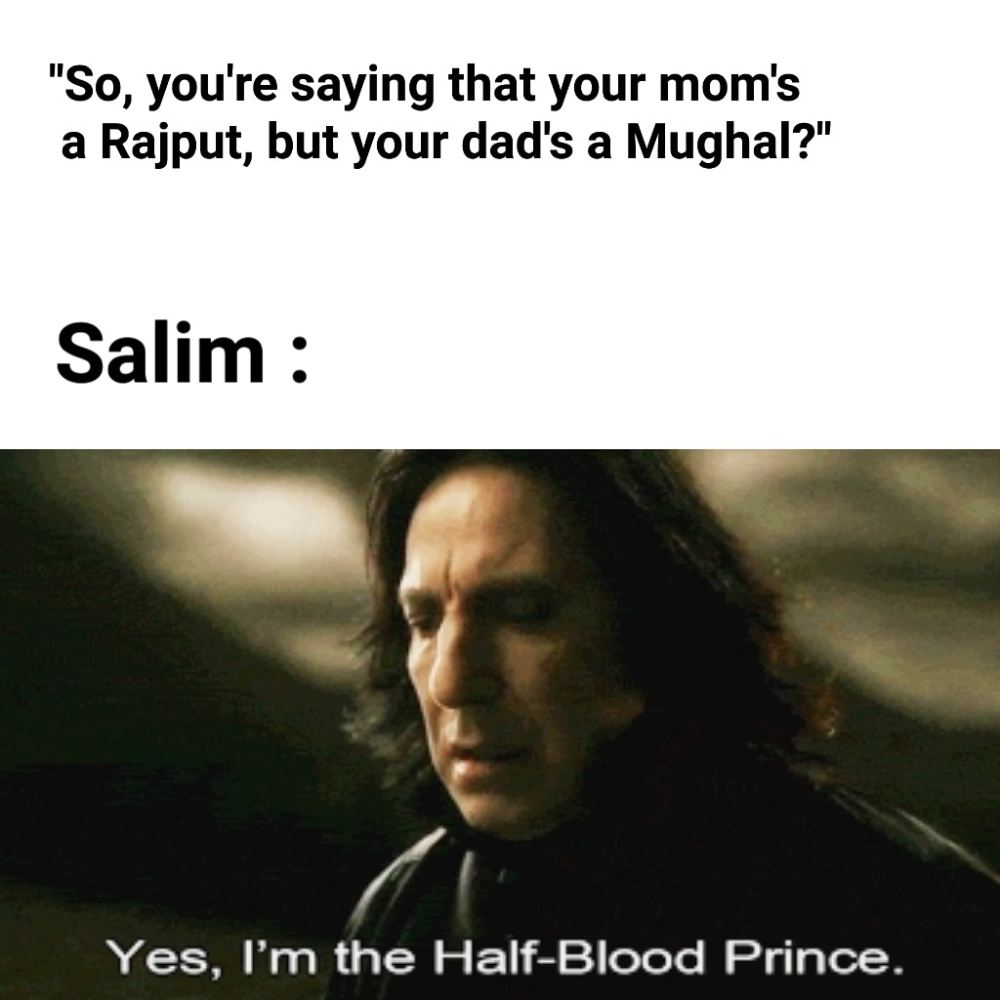
In a country where rote learning is a norm and studying history usually involves the memorisation of dates, significant events and personalities, the true essence of the past lies forgotten, making many consider it a dry subject.
“The initial aim behind starting my page was to make history more relatable and understandable to everyone, and what better medium than memes. The goal is to educate more people about the past while making them laugh at the same time,” said Rishika Gupta, founder of Indian History Meme, which covers the ancient and medieval eras, the British era and even India’s freedom struggle and independence.

Mad Mughal Memes (MMM) on the other hand, focuses primarily on the period it takes its name from, the emperors of which ruled for almost 300 years. While their reign remains a point of contention with many terming them “invaders” and “plunderers”, the page attempts to showcase the empire’s glories, victories, losses, art and culture in an enjoyable manner.
“We usually use Mughal miniature paintings for our memes. Sometimes, the subjects of a given painting are posing in a meme-able way, or else we search for a painting appropriate to an idea. When not using miniature paintings, we depict Mughal incidents in a quirky way using a contemporary meme template which corresponds to the situation. This way, people come to know more about the historical event too,” explained the anonymous founders of the page, whose online names Begum Ruqaiya and Admin Birbal are taken from the Mughal world.
Due to their eye-catching, detailed imagery, medieval miniature paintings are a common source for meme templates used by history pages. But that’s not all that brings in audiences – each of these pages curate content that is informative and educational, and in the era of shorter attention spans, pique the reader’s interest just enough to add in likes and comments.
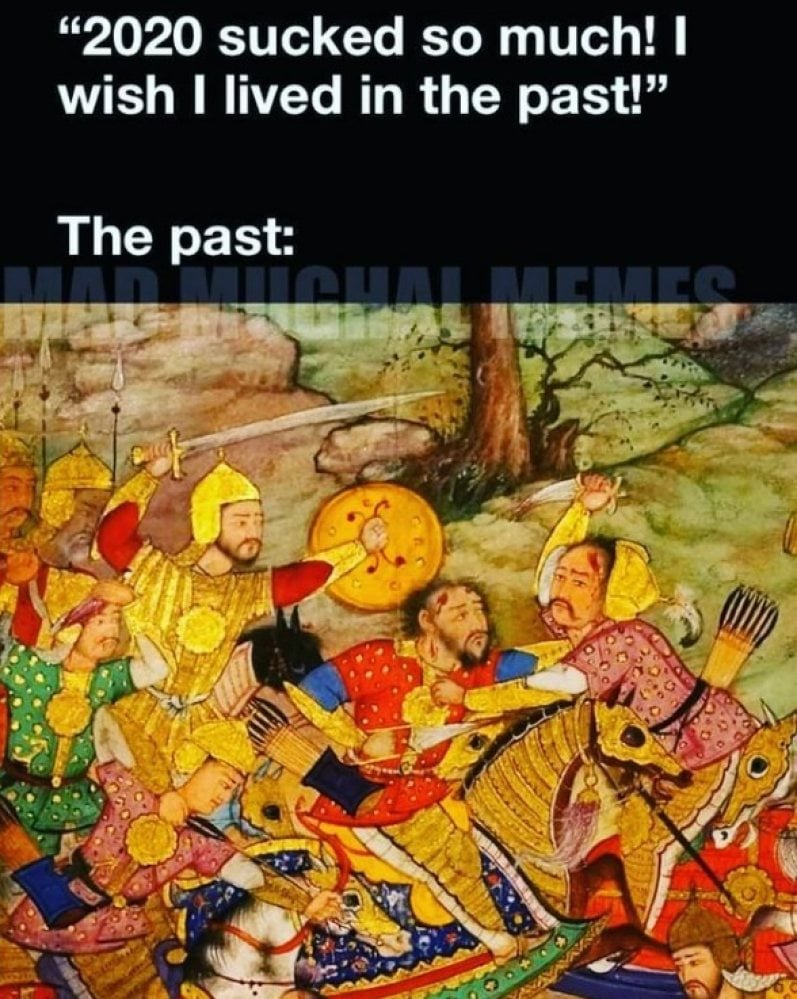
“The goal is to create a digital platform for all heritage enthusiasts, seekers as well as creators – a place that everyone can call their own, so we can all learn from each other. The larger aim is to build a connection between people and museums, libraries, and galleries so that subjects like art and history do not remain niche,” said Medhavi Gandhi, founder of The Heritage Lab, which has a presence on social media platforms and its own blog too. “Our Instagram started after the website – but it’s a personal space where I find suggestions, opinions and supporters. The platform’s content is geared towards how we’re all feeling at the time – if it’s a time we need laughter and lighthearted conversations, I find it better to share memes,” she added.
They might disguise it as humour, but they actually spread really excellent knowledge
Praise in high places
Along with the layman with an interest in history, noted authors, historians and scholars also bring in the views and likes for these pages. From William Dalrymple and Manu S. Pillai to Rana Safvi, Ursula Weekes and Ira Mukhoty, each of these historians and authors follow some of these pages, occasionally liking a post or two or leaving a comment.
“MMM sometimes uses black humour to put across their message. The Heritage Lab does it through art and well-researched articles. Sarmaya also does great work by showcasing their objects and artefacts online, and I’ve even done some videos for them. Each one has their own way of demystifying Indian history, and all of them are doing a wonderful job of making people aware of our history, heritage and culture,” said Safvi, a renowned Indian writer, scholar and translator.

These distinguished names not only appreciate the effort that goes into maintaining such pages, but also that they encourage the youth to engage with the subject. “Most people are not even aware that we have such rich visual resources…. Whether or not everyone consuming the content will actively form an interest in history is not the point. So long as it generates a greater interest in general, it is a happy result,” said Pillai, author of three acclaimed historical books.
Author Mukhoty, whose last work was Akbar, a definitive biography of the third Mughal emperor, agreed: “Preconceptions are challenged through this visual medium which is easy to understand but which can also make pertinent observations. The best part of history memes is that they draw in the youth, who could otherwise become quite alienated from more serious forms of interaction. Because art and history are so colourful, they lend themselves particularly well to the making of memes!”
As the content of these pages gets the green light from these noted names, it validates the work creators put into their posts, and encourages their makers to create more.
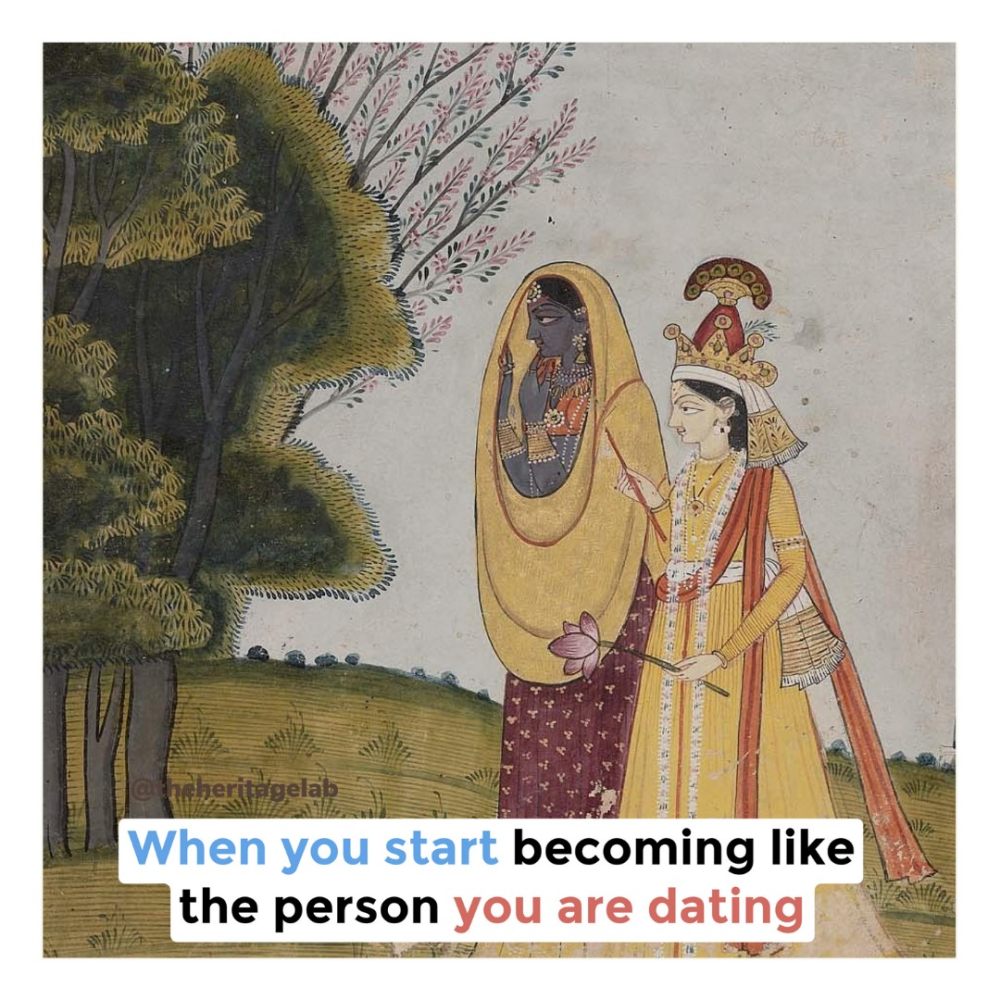
“One of my favourite handles is The Heritage Lab. I love that they use quality art and materials. They might disguise it as humour, but they actually spread really excellent knowledge. And, they are particularly good on women’s issues,” Mukhoty added.
But not everyone takes to these platforms positively – the laughs and likes are challenged by brickbats and trolls too.
“Generally, comments get heated when we post anything about an Islamic sultanate. Those miscreants don’t even look at posts on other dynasties of different sects, but start ranting that we are biased,” said Amay Gite, founder of Heritage Hindustan, which has been “unravelling the enigmatic past of the Indian subcontinent” through its Instagram account.
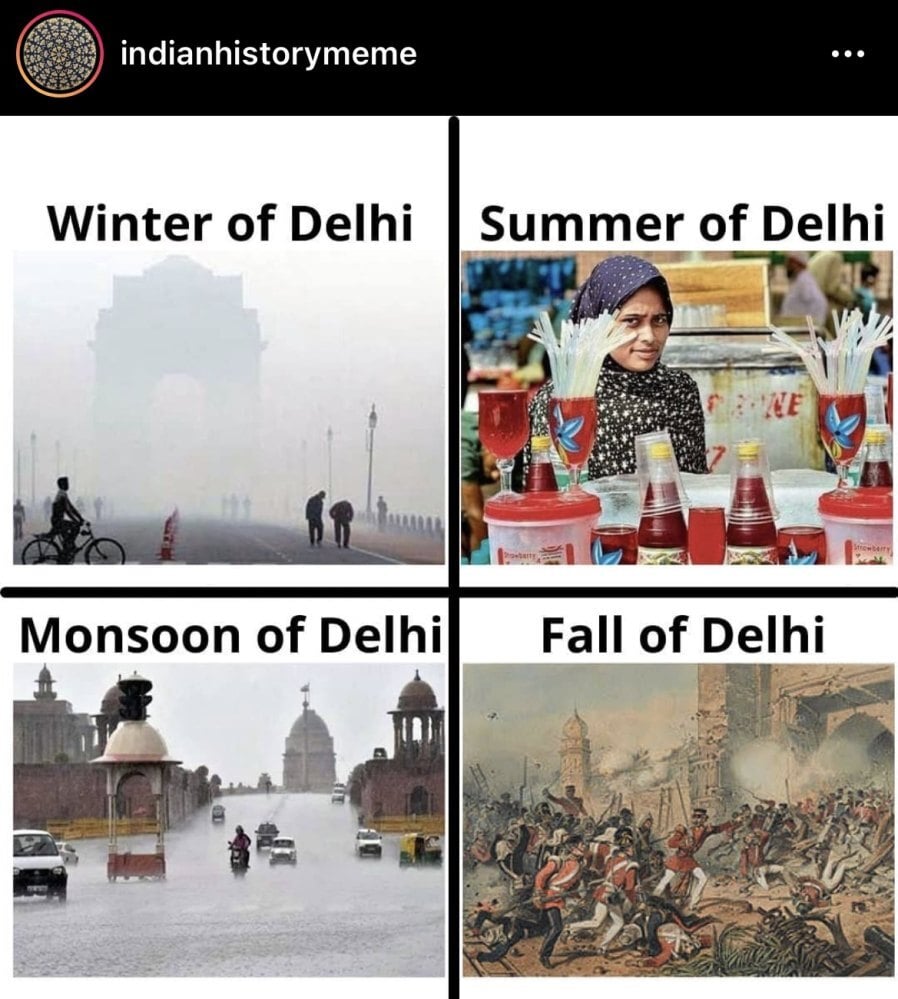
Most makers like Gite say that memes or posts relating to contemporary history and politics are criticised as well, with many creators getting threats in their inboxes – so they try to steer away from topics that they think would anger keyboard vigilantes. Despite these few instances, they strive to create a home for like-minded aficionados who want to learn about all things historical.
So whether it be Salim trying to explain his ancestry or Mumtaz Mahal reciting a poem to her husband Khurram (Shah Jahan) about capturing Kandahar, these history-based memes and social media accounts are here to stay for the foreseeable future, spreading both laughs and knowledge, and converting those who would use history classes in school to catch up on their naps into true fans.

“The more people are inspired by history to tell stories in whatever ways and forms; to dig in and discover; and to humorously apply some of them to present day contexts, the better it is in chipping away at that idea that history is a boring subject,” concluded Pillai.
